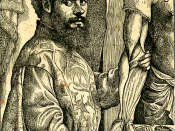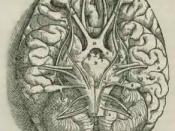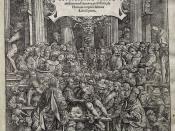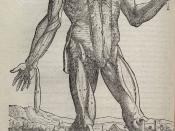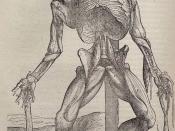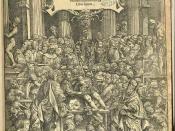I. IntroductionThe work and contribution of Andreas Vesalius to the world of science has an enormous value that proves his determination and courage. It was his passion and love for medicine that made of Vesalius one of the greatest physicians in human history. This paper demonstrates that the work of Vesalius was a revolutionary change in the sixteenth century and his legacy still relevant for modern medicine.
II. Vesalius Fascinated WorkVesaliusÃÂ work focused largely upon the anatomy of the human body. He lived during the Renaissance, an era renowned for its emphasis on Humanism and resurrection of classical texts . In fact, Vesalius work was based on drawings and writing books. Dissatisfied with the quality of the teaching he felt he had received, Vesalius decided to begin his own research and observations in order to disprove certain widely held beliefs. His passion for anatomy led him to concentrate his studies on the structure of the human body.
It was his determination and ambition that made him establish his own beliefs. He thought it was necessary to have real evidence to be able to understand and demonstrate the veracity of any belief. Thus, he started to examine death human corps even knowing dissection on the human body was illegal at that time and penalties could often be severed. He used dissection and human skeletons to establish what the internal workings of the body looked like and made detailed drawings of these. Vesalius immortalized all his studies and investigations in human body by making a combination with science and art. In every draw he made he tried to capture every single detail he observed in his dissections .
III. Revolutionary Discovery and LegacyThe big difference which made Vesalius work so unique was he based his work on dissection of the human body. These experiments proved to him that Galen wasmistaken in a lot of his theories and ideas about the anatomy of the humanbody. This contradiction represented a real challenge for Vesalius since Galen was a prominent Roman physician and philosopher and his teachings had been dominated the practice of medicine for 1500 years . Although, Vesalius new ideas were criticized by the medical community who thought outrageous that he would criticize Galen, Vesalius work marked a turning point in medical history years after.
Taking advantage of the new printing technology that was available at the time of the renaissance, Vesalius decided to publish a revolutionary book De Humani Corporis Fabrica. The agenda of new medicine. The book was a major break through in medical history for a number of reasons. It developed the use of technical drawings and disproved theories that had been in place in Europe for many hundred of years. It provided detailed, and accurate, drawings and explanations of the workings of the human body: which was another important development in medicine; and it showed the clarity of his work, argument and presentation.
2IV- Heir to Hippocratic ModelAndrea Vesalius is considered one great physician in human history. All his work and contribution marked the beginning of a new era for medicine. Thanks to his fantastic research on the human structure, medicine community can understand and treat diseases properly. He is, without doubt, an excellent representation of a Hippocratic physician because his determination, great reasoning and his fantastic discoveries which helped and led humanity to new explorations.
V- ConclusionThe development and evolution of medicine has become possible thanks to the existence of great physicians, scientific and researchers that, through the years, have marked human history. An indelible legacy and contribution that will last forever in the heart of science. Vesalius makes part of this selected group who has changed the world.
3BibliographyI. MonographsAlder, Robert E. Medical Firsts, from Hippocrates to the human genome.
New Jersey: John Wiley & Sons.2004.
Garrison, Daniel & Hast, Malcolm. On the Fabric of the Human Body.
Evanston: Northwestern University.2003.
Rothman, J. Medicine and Western Civilization. New Brunswick:Rutgers University Press. 2003
